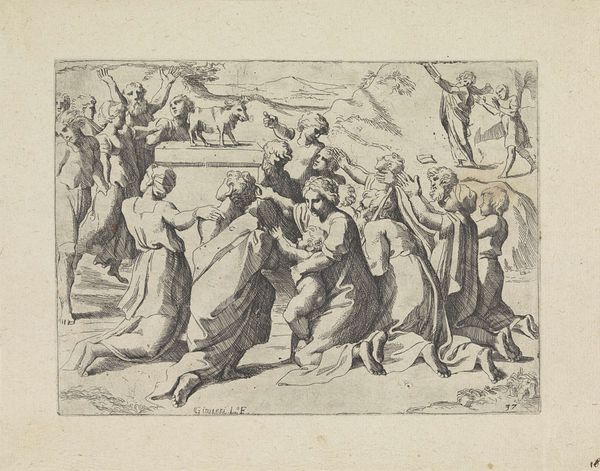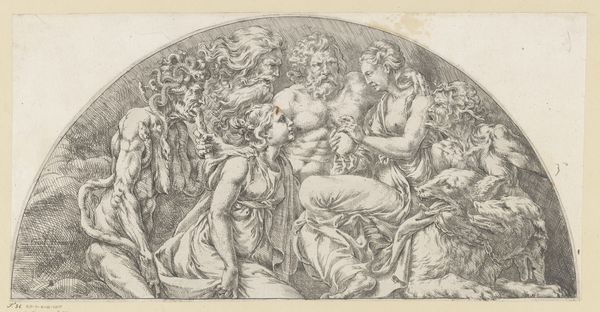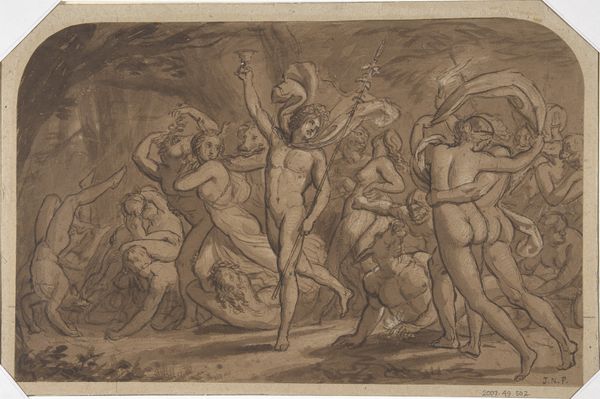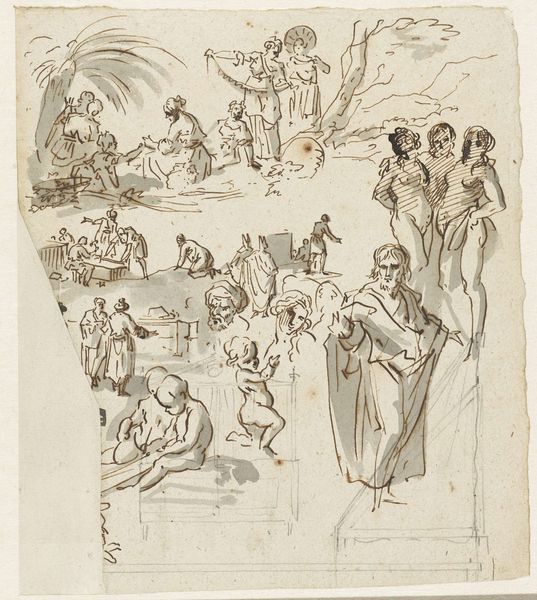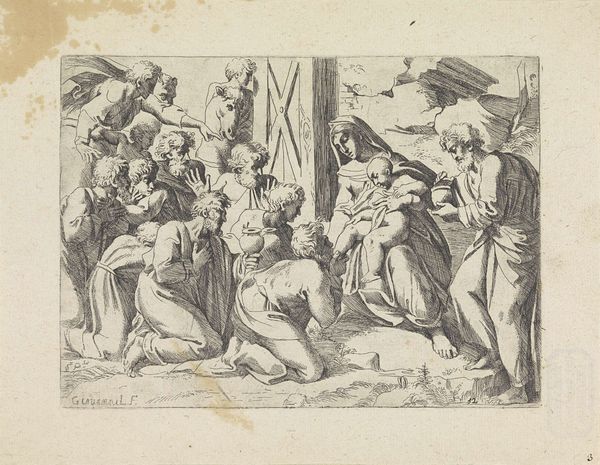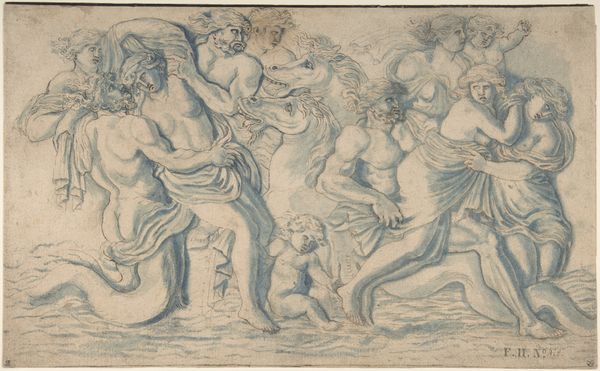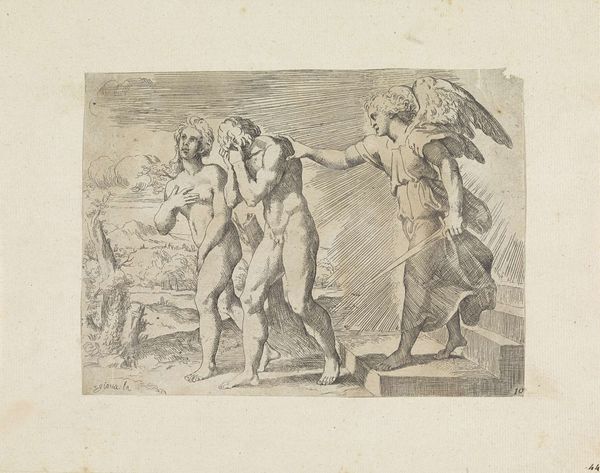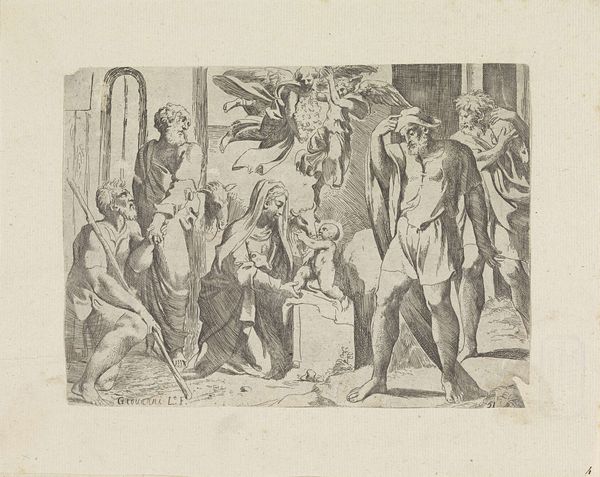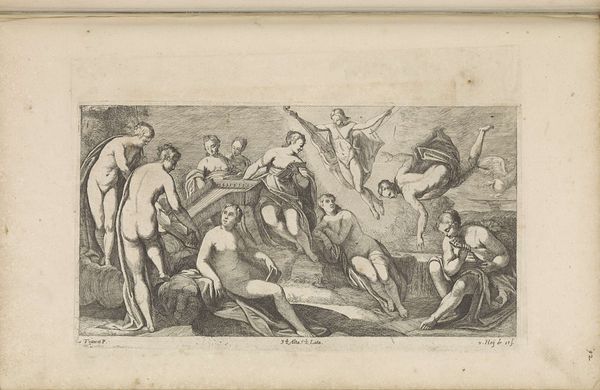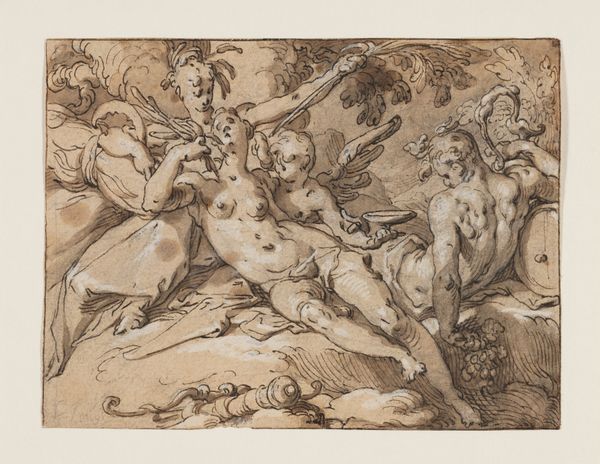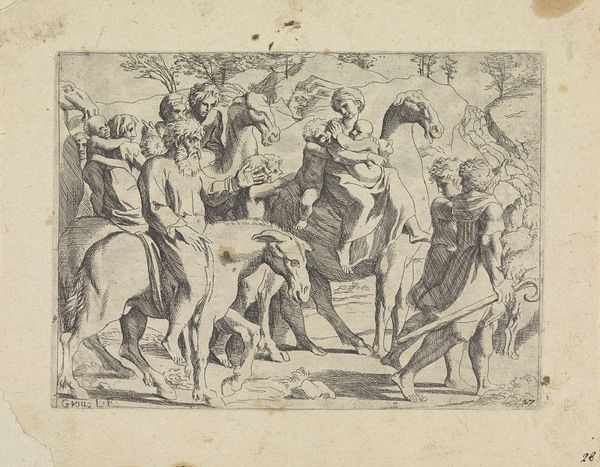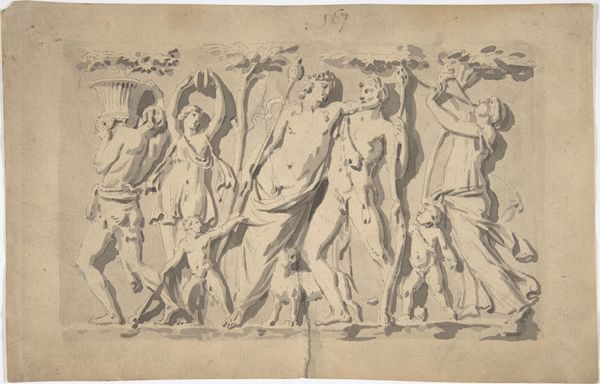
print, etching
#
baroque
# print
#
etching
#
figuration
#
history-painting
Dimensions: height 132 mm, width 179 mm
Copyright: Rijks Museum: Open Domain
Editor: Here we have Giovanni Lanfranco's "Baptism of Christ," an etching from 1607, housed at the Rijksmuseum. I'm struck by the almost frantic energy conveyed through the delicate lines of the etching. What stands out to you? Curator: Considering its materiality as a print, we must appreciate this piece within a larger network of image production and distribution in the 17th century. Prints like these weren't just aesthetic objects; they were commodities, produced through collaborative labor and disseminated to a burgeoning market hungry for accessible art. The etching process itself, biting into the metal plate, allowing for multiples, reflects this ethos of accessibility and reproduction. Editor: So, it’s less about individual genius and more about...production? Curator: Precisely! Think about the social context. Who commissioned it? How would people engage with it? These prints played a key role in spreading religious narratives and artistic styles, serving both devotional and decorative purposes. The materiality dictates that it wasn’t only made for the elites. Editor: The details still seem incredible for what sounds like mass production. It's interesting to consider how labor impacts our perspective. Does knowing its background alter your appreciation of it at all? Curator: Absolutely. Understanding the labor and dissemination of this print redirects our focus from pure aesthetics to production and its subsequent consumption within period society, ultimately raising crucial questions regarding art as labor rather than just a luxury object. Editor: I hadn't thought about it that way at all. Seeing art as work really changes how I view these historical pieces! Curator: Indeed. Now, we can better appreciate the historical function of prints like this.
Comments
No comments
Be the first to comment and join the conversation on the ultimate creative platform.
